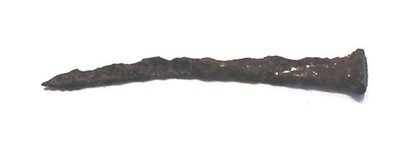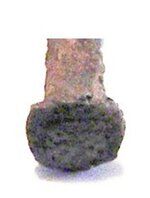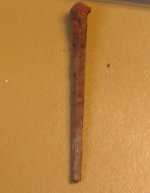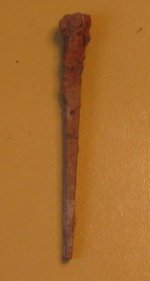jglunt
Sr. Member
I was out checking an old abandoned homestead that I recently ran across and was rummaging around the old barn in back. The roof had caved in but the walls were still standing. They were hand hewn 8 x 8 timbers with beautifully fitted dovetailed corners and some remnants of old chinking. The only nails in the walls were these spikes that were toe-nailed into the ends of the dovetails to hold them together. I believe they were added after constuction, but I may be wrong. They are about 3.5 inches long with a square (slightly rectangular) head and a square tapered shaft with a blunt end. The head has a rectangular raised area in the center that you can see in the photo which I enhanced as best I could to make it more visible. The two long sides of the head look like they have a sprue or small nipple on both sides. I'm curious if anyone has seen this type and can tell me how they were manufactured and their approx. age.
jg
jg








